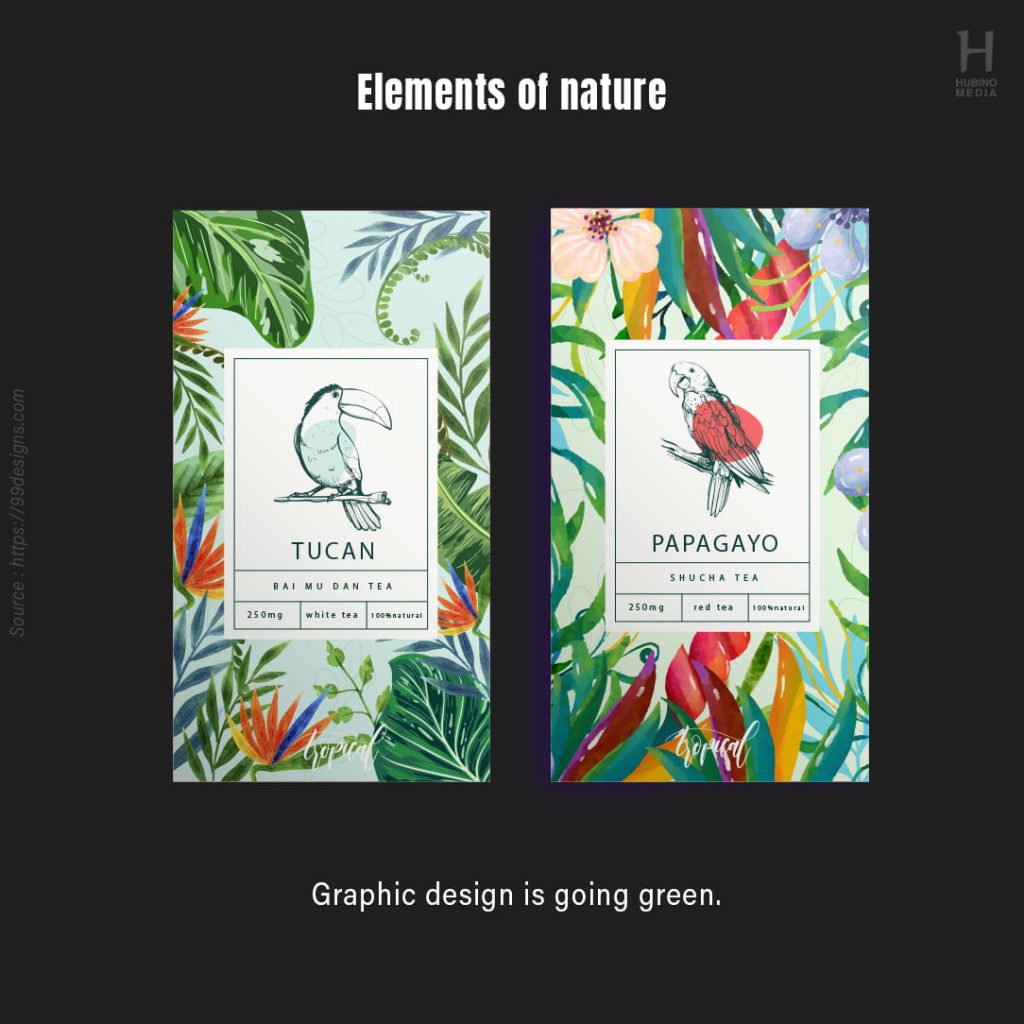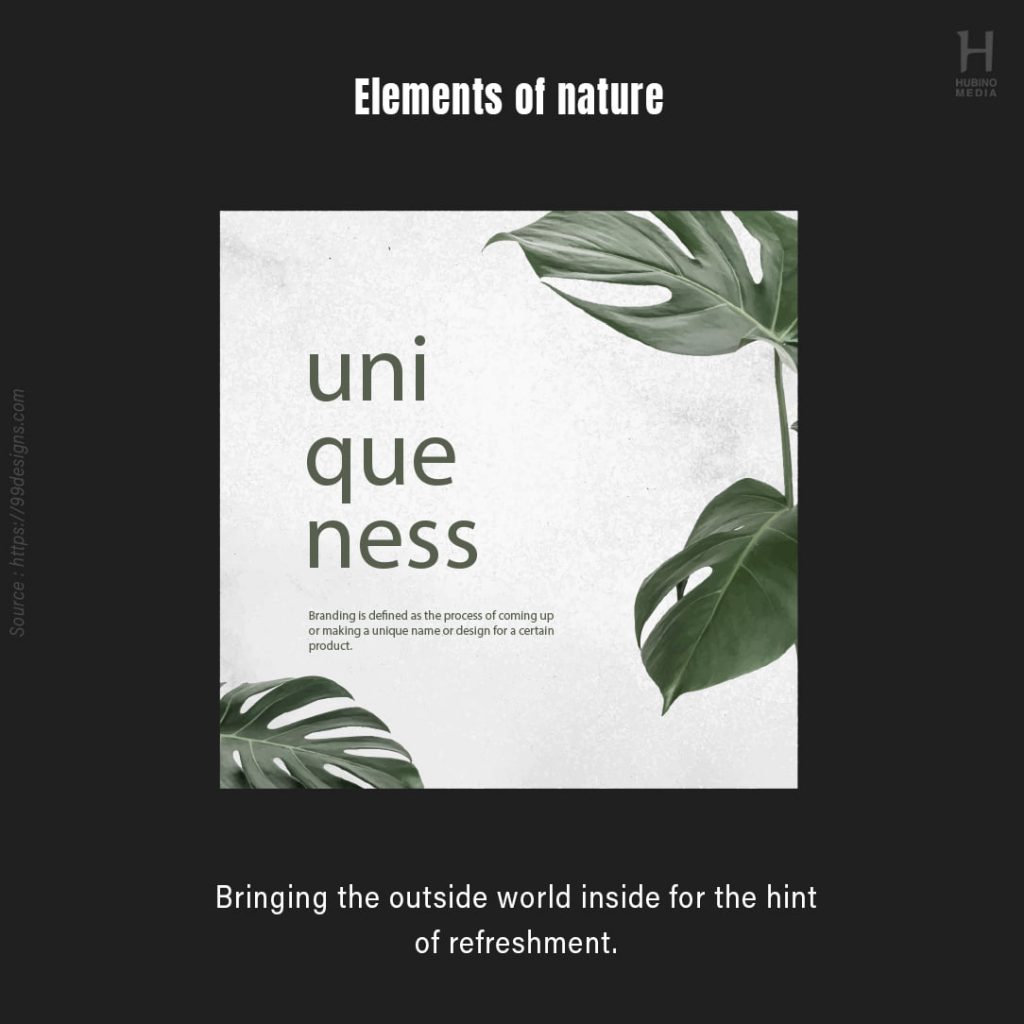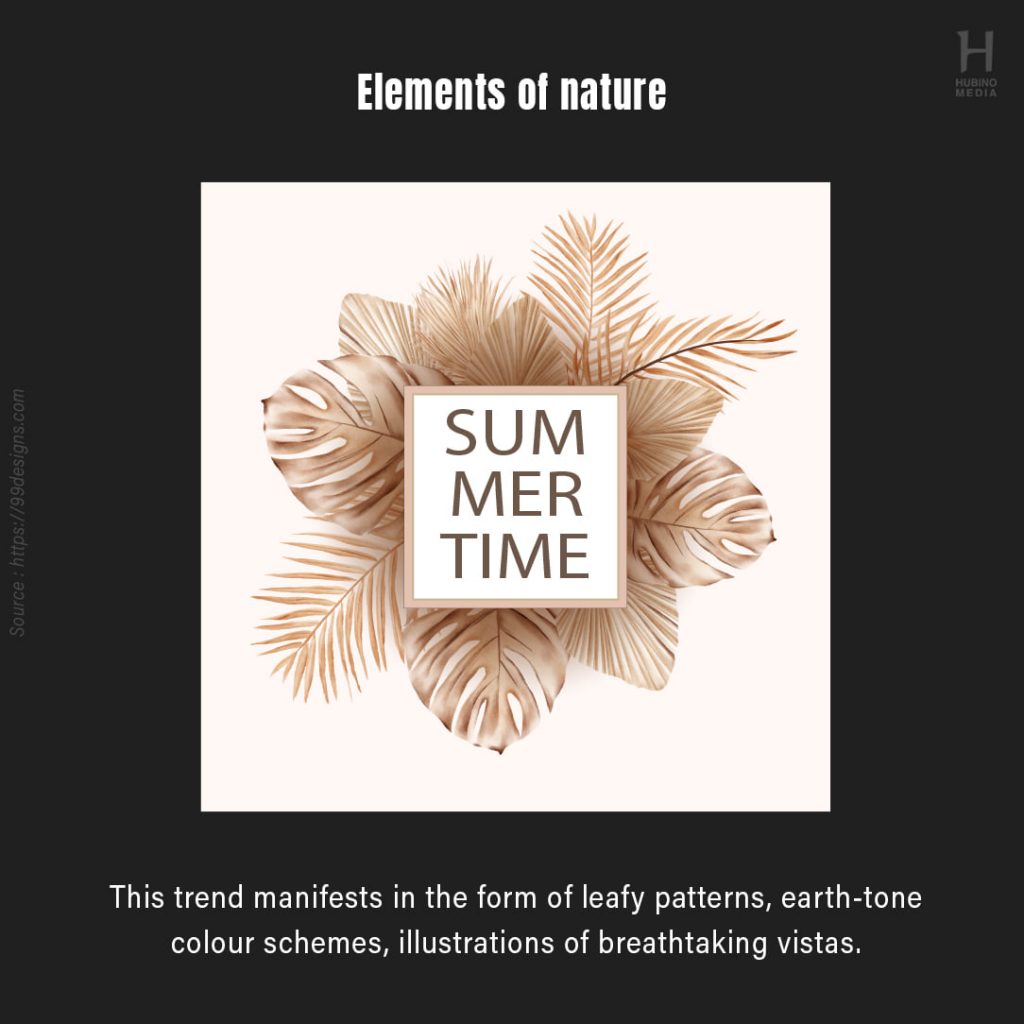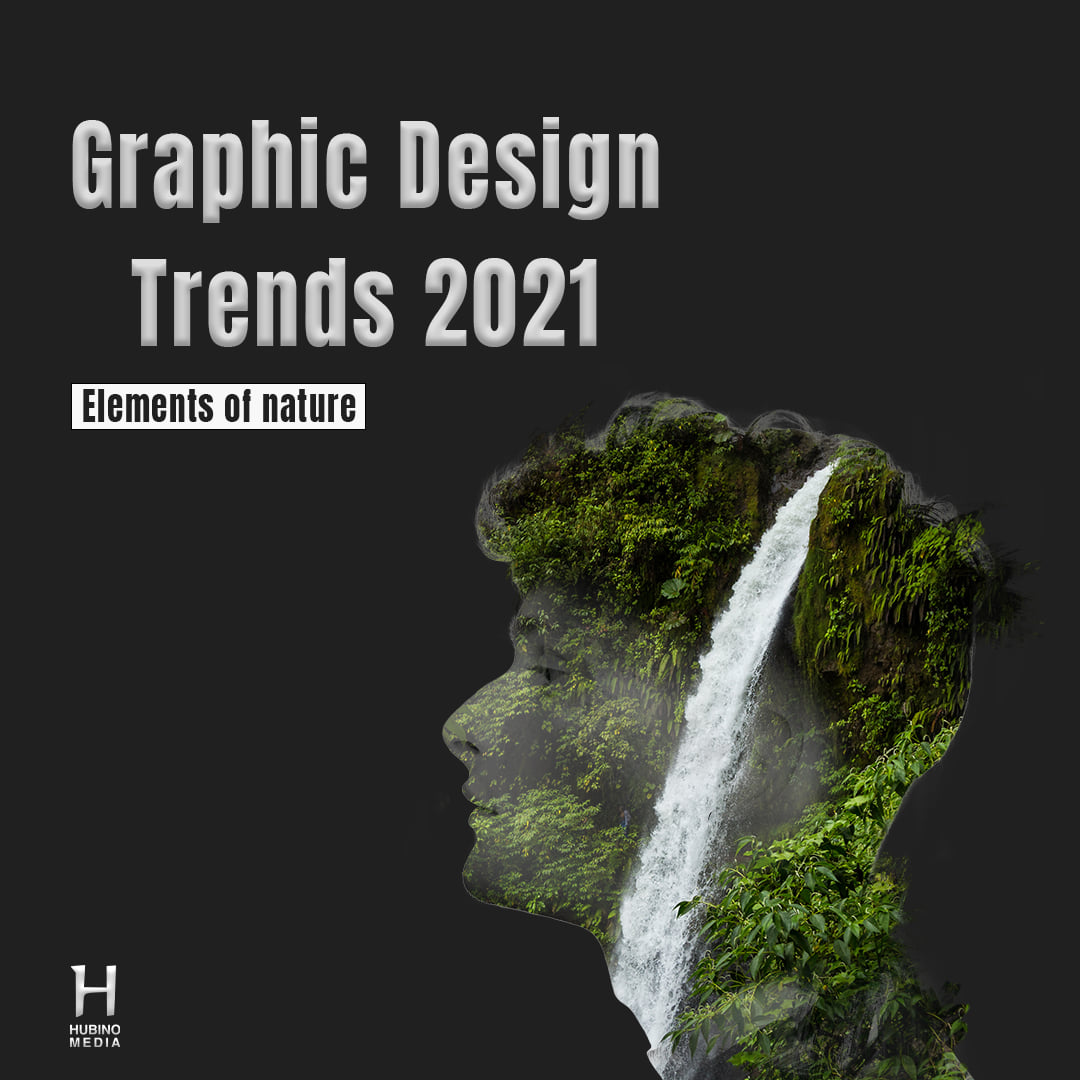For centuries, nature has served as a source of inspiration for designers and artists. The organic design style is all about employing natural, tactile components to create the sense, sight, and sound of being immersed in nature. It is deeply founded in our profound connection with the environment around us.
Organic textures, forms, and colours have become frequently employed throughout different parts of design in recent years, driven by sustainability and ecology. References inspired by nature are common in product design, interior design, and industrial design, but they also work well in the field of graphic design.

Colours of Nature
Neutral colours are one of the simplest and most effective methods to generate an organic, natural vibe in your designs by mimicking our environment’s natural palette. Faded pinks, blues, and greens, in addition to the soft browns, beiges, whites, and greys that spring to mind when you think of ‘neutral,’ may also be fantastic additions to your neutral palette. Neutral colours can assist make stronger hues look more lively when coupled with brighter colours. The usage of neutral hues in branding design, such as social media templates, website templates, and stationery, has grown increasingly common.

Organic design may be incorporated into practically any media, style, or method, from botanical artwork to eco branding and sustainable web design.
Textures of Nature
Natural textures are a terrific method to give your designs a natural, handmade sense because they are one of the more tactile parts of organic design. Some of the most typically utilised natural materials for adding a more tactile touch to your work include paper, twine, and wood-based designs, as well as botanical prints and textures. The collage trend is an excellent illustration of how designers may combine natural textures with digital components to create modern designs that have a handcrafted feel.
Elements of Nature
Botanical design is frequently a direct portrayal of flora in its natural form, as opposed to designs that just take inspiration from nature or contain organic motifs. Botanical design is generally drawn in a realistic and organic manner, with a blend of vivid yet subdued colours, delicate lines, neutral backgrounds, and natural shapes and patterns. Botanical design, which is reminiscent of the 1600s still-life style, is now widely utilised in posters, branding, and graphics, and is ideal for generating an organic, nostalgic feeling.

Inspiration from nature
Many excellent designers get inspiration from nature, and there are several instances of this sort of inspiration available online. Looking at the world we live in and figuring out how to incorporate it into a design necessitates taking a fresh look at nature.
There are a plethora of fantastic approaches for producing unique, stunning, nature-inspired designs. Let’s have a look at several various ways to get ideas from nature.
1. Don’t take nature for granted on a daily basis. Take a deeper look instead.
2. Choose anything from the natural world and investigate what it has to offer. Concentrate on a Specific Category’s Variety
3. Turn your attention away from plants and onto natural objects that are unrelated to plant life.
4. View Nature from Uncommon or Divergent Angles, Designers may create more unique and aesthetically appealing solutions by observing nature from unusual or divergent perspectives.
5. Opposites, a man-made waterfall in a desert-like setting, definitely not something we see every day.
6. Consider Nature in Motion. Nature may be considerably more engaging when it is in motion.
7. Flowers don’t have to be pink, and leaves don’t have to be green to be interesting.
8. Think of a natural setting you’ve never been before, and then utilise your imagination as an indirect way to produce a design inspired by that location.
Graphic design is a career in which people produce visual material to convey messages. Designers utilise typography and graphics to fulfil users’ individual demands and focus on the logic of showing items in interactive designs to maximise the user experience by employing visual hierarchy and page layout approaches.
